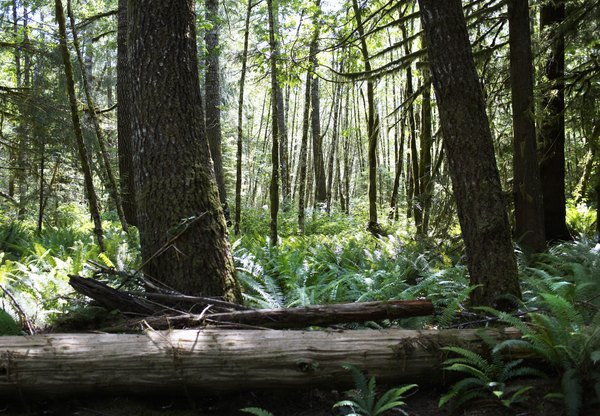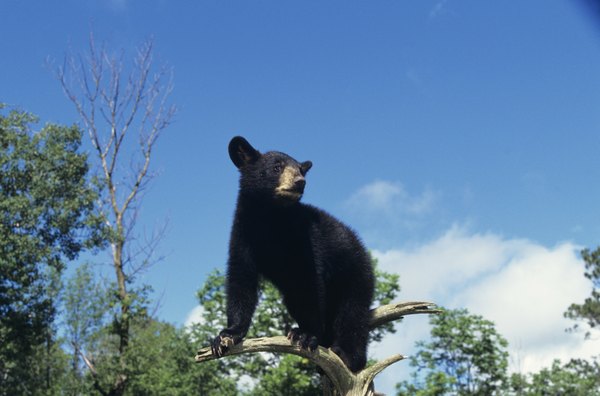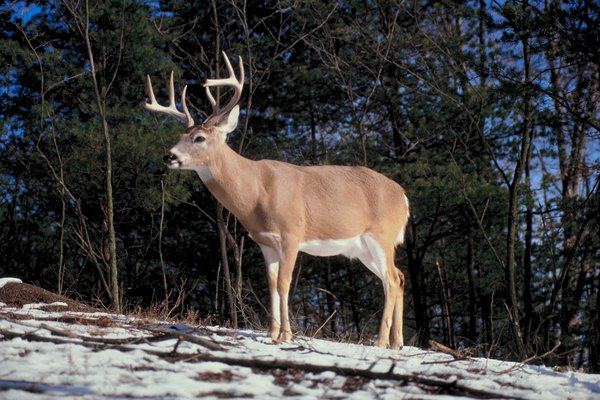Animal Adaptations In Deciduous Forest
Temperate forests exist all over the globe. There are two types of temperate forests. The largest temperate biome, the temperate deciduous biome, exists in North America, Western Europe, Asia and Australia. The much smaller temperate rain forest only exists forth the northwest coast of North America, and small portions of the Chilean, New Zealand and Australian coasts.
Deciduous Forest Plants

••• Ryan McVay/Lifesize/Getty Images
The plants of a temperate deciduous forest accommodate to the biome in a multifariousness of ways, depending on the type of plant. The copse grow large leaves to absorb the nearly possible light during the growing season. The bark of deciduous copse is thicker and heartier than tropical copse to protect the inner cadre during long, hard winters. Smaller plants, such as flowers and ferns, grow early in the spring with long, quick-growing leaves. This allows the constitute to absorb equally much sunlight as possible earlier the wood trees leaf and block the total strength of the sun.
Deciduous Wood Animals

••• Tom Brakefield/Stockbyte/Getty Images
Because the temperate biome has four distinct seasons, animals spend much of the growing season preparing for winter. Small animals, such as squirrels and chipmunks, gather nuts and seeds, storing them in hollow logs or holes in the ground. Larger mammals, such bears, woodchucks and raccoons, spend the summer eating every bit much as possible. The weight they gain during the summer and fall allow these animals to hide during the wintertime when the weather condition is cold and nutrient is scarce. Many birds migrate away from the temperate biome to warmer climates.
Pelting Forest Plants

••• Hemera Technologies/Photos.com/Getty Images
Temperate rain forests receive more than than 100 inches of rain every year. So in the rain wood, plants must arrange to the moist environment. The copse grow bark that protects the inner core from common cold temperature, while protecting the tree from parasitic fungi. Rain forests abound a startling multifariousness of fungi on copse, rocks and the globe. These take the form of mushrooms, shelf fungi and ball fungi.
Rain Forest Animals

••• Jupiterimages/Photos.com/Getty Images
Like their cousins in the deciduous wood, temperate rain forest animals must spend much of the warm seasons preparing for wintertime. Simply because of the high rainfall, the animals must also grow thicker coats that protect them from the moisture. Larger mammals, such equally deer, are smaller and have shorter antlers than deer in other biomes. This adaptation gives them the ability to move freely in the underbrush. Larger carnivores, such as wolves and wildcats, grow thicker pelts in the fall to protect the animals during the cold wintertime months.
Animal Adaptations In Deciduous Forest,
Source: https://sciencing.com/plant-animal-adaptations-temperate-forests-8490643.html
Posted by: smithmanneve.blogspot.com


0 Response to "Animal Adaptations In Deciduous Forest"
Post a Comment